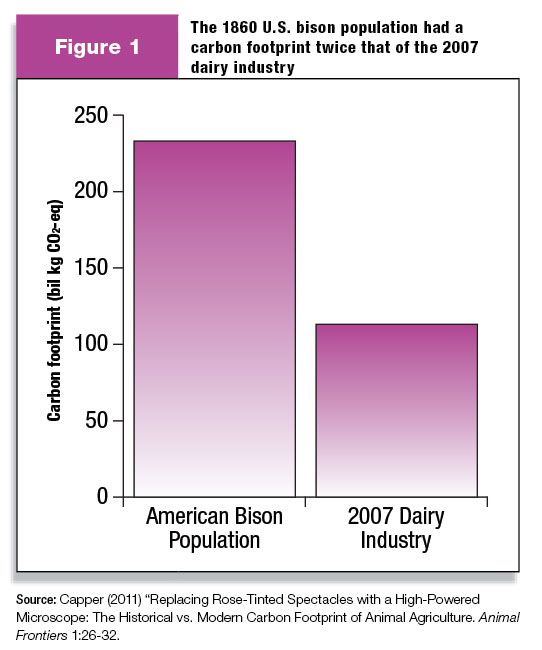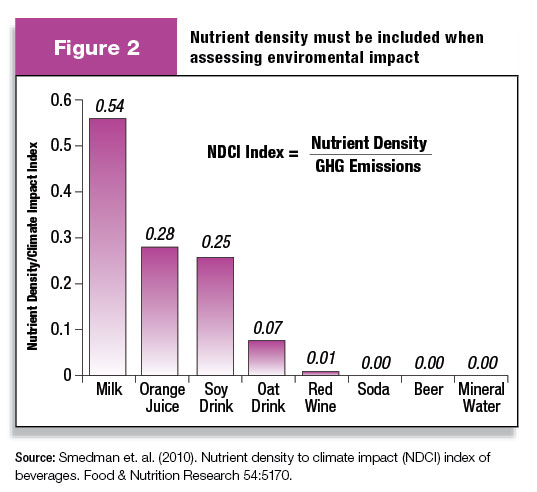Sustainability is a topic on the mind of today’s society. “You almost can’t read anything without seeing something about climate change and water use,” said Dr. Jude Capper, Washington State University. “The anti-animal ag industries really try to get people’s attention. HSUS, PETA, Greenpeace know exactly what messages to put out there.”
In Capper’s presentation last month at the Vita Plus Dairy Summit in Wisconsin Dells, Wisconsin, she said the Environmental Working Group (EWG) released a report in July that displayed meat to be the food with the highest carbon footprint.
Yet, according to the EPA, if we break down the entire carbon footprint, dairy/red meat is 3.05 percent of U.S. carbon emissions.
EWG’s underlying message was to encourage people to adopt a meatless diet. Capper said that if every individual in U.S. went meatless on every Monday, it would only reduce carbon emissions by 0.44 percent.
“It doesn’t make that much difference,” she said. “Part of the reason for that is the U.S. ag system is so efficient.”
In order to properly display that efficiency, the dairy industry must be evaluated on production basis, not a per-cow basis. Capper reported that since 1944, the carbon footprint per cow has doubled, but the carbon footprint per pound of milk has been reduced by two-thirds.
The entire U.S. dairy industry has reduced its total carbon footprint by 41 percent through greater productivity.

Taking a look further back, the 1860 U.S. bison population had a carbon footprint twice that of the 2007 dairy industry. (See Figure 1 .)
That improved productivity is also the best way to meet the growing U.S. and global demands of dairy products. Capper conducted a study of three production systems – rbST, conventional and organic.
If dairy consumption continues as expected, it will take 13 million conventional cows to meet that demand. An organic system would require 25 percent more cows, while rbST would need 8 percent fewer cows.
The same holds true for land base. An organic system requires 33 percent more land than conventional, while rbST needs 5 percent less land.
Organic systems have a carbon footprint 13 percent greater than conventional and rbST is 6 percent less. As carbon footprint labeling of food products becomes more popular, this information may sway some consumer buying habits.
Yet, buying solely on carbon footprint may not be the right way to go either, Capper said. A paper from Sweden looked at total GHG emissions of drinks while taking into consideration the drinks’ nutrient density. (See Figure 2 .)

“Milk on a nutrient density/climate impact index looks really, really good,” she said. “It is twice as much as orange juice, the next leading drink.”
In a study submitted to the Journal of Dairy Science , Capper compared the environmental impact of Jerseys and Holsteins. Because a mature Jersey cow weighs less than a Holstein, it needs less water and land.
Therefore a decrease of GHG is shown in cheese made from Jersey milk versus Holstein.
The environmental savings in producing 500,000 metric tons of cheddar cheese with Jersey milk equates to land the size of Mt. Rainier National Park, water to supply 657,889 households annually, enough BTUs of energy to heat 6,335 households a year and carbon dioxide equal to removing 336,888 cars off the road.
This study also resulting in finding that characteristics of bodyweight, milk yield and component yield have a greater carbon footprint impact than other areas like calving interval, herd life and age at first calving.
Capper also pointed out that new practices utilized to reduce methane could reduce cow productivity and, in essence, not reduce the overall carbon footprint of the dairy. For instance, adding omega-3s can reduce fat-corrected milk by 7 pounds per cow.
With the real-life challenge of meeting a growing demand for dairy products, finding ways to increase productivity applies to every system. “Sustainability is not just about environmental benefits, but also economic and social,” Capper concluded. PD

-
Karen Lee
- Midwest Editor
- Progressive Dairyman
- Email Karen Lee








